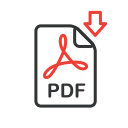The losses suffered from your customers' late payments can put severe constraints on your company's liquidity.You need to assess your customers' chances of paying late in order to take preventive measures and initiate collections before your cash flow is harmed. |

|
In many cases, your customers already know before the due dates whether they'll default on payments. Sometimes, they behave in certain manners that indirectly suggest their intention of stalling.
In our experience, there are three main indicators you should take into account to detect your customers' possible delays in payments.

|
The more negative answers you give to these indicators, the higher your customers' risk of paying late. |
1. Economic situation |

|
If your customers are heavily impacted by tough economic climates, their struggles typically translate into late payments to you.
- Is your customer's sector negatively affected by current economic setbacks?
- Is there fierce competition in your customer's sector?
2. Payment practice |

|
Your customers' payment history and communication are the most important sources of warning signs of payment delays.
Payment history
- Has your customer regularly failed to pay on due dates?
- Does your customer only pay after you remind them?
- Has your customer avoided telling you why payments were late?
- Has your customer told you that payments will be delayed until they get a new loan?
- Has your customer told you that payments will be delayed until their customers pay them?
- Has your customer told you that payments will be delayed until they pay other suppliers first?
- Has your customer asked for a new payment deadline or a new payment plan?
- Have your customer's cheques been returned unpaid or bills of exchanged been dishonoured?
- Were there insufficient funds in your customer's account when debited?
- Has your customer suddenly changed their bank?
Communication
- Have you found it difficult to contact your customer to discuss their non-payment (i.e. they don't respond to your phone calls or emails)?
- Has your customer not stated in writing when they'll pay you?
3. Purchasing behaviour |

|
Changes in your customers' suppliers and orders could imply potential problems related to payment.
Suppliers
- Has your customer changed their suppliers because of failed business relationships?
- Has your customer sought an alternative supplier for what your business currently supplies them with?
Orders
- Has your customer made baseless complaints that could be used as excuses for delaying payments?
- Has your customer changed their buying patterns significantly (i.e. they buy much less to keep costs down, or they buy much more, knowing that they will soon not be able to make purchases)?
You don't always know for sure whether your customers will pay late. But the indicators above should give a fair initial assessment of your customers' payment practice in the near future.

|
Picking up the warning signals is one thing, responding to them is another. |
Based on the level of default risk of each customer, you may need to remind them to pay before the due dates, plan collections activities or payment arrangements specifically designed for them, and perform the planned collections timely and effectively.
If it's too time-consuming to anticipate and act to collect the outstanding invoices, and your prior efforts haven't resulted in payment, consider getting external help.
An experienced and professional collections agency with the right approaches can encourage your customers to pay, while maintaining your business relationships.
With Atradius Collections, you can use the online service to:
- Know right away how much it costs to collect your outstanding invoices. Get a free quote here.
- See real-time updates on the collections progress
- Get paid as soon as your customers pay their outstanding invoices

